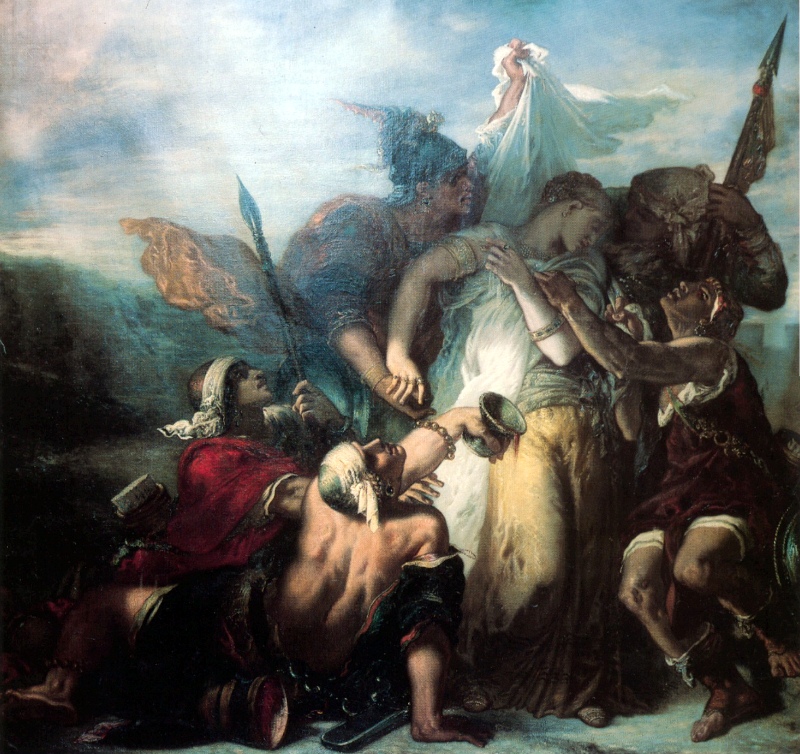Text from The Saint Andrew Daily Missal,
unless otherwise stated.
Saint Clement I.
Pope and Martyr.
Feast Day 23 November.
Double.
Red Vestments.
Saint Clement, a successor of Saint Peter, is named third in The Canon of The Mass, after The Apostles.
The Letter of Saint Clement to The Corinthians is one of the most precious documents of the earliest Christian Centuries.
Following the affirmation of Origen, The Roman Breviary confuses this Saint with another Clement, an auxiliary of Saint Paul. Wherefore, the Epistle chosen is that in which The Apostle speaks of the Clement who worked with him for the Gospel and whose name is written in The Book of Life.
On the testimony of The Greek Acts of Saint Clement, dating from the 4th-Century A.D., The Roman Martyrology likewise declares that "relegated to Chersonese during Trajan's persecution, he at last won the glorious Crown of Martyrdom, having been cast into the sea with an anchor attached to his neck." "His body," it adds, "was carried to Rome, under the Pontificate of Pope Nicholas I and Solemnly laid in the Church which had been built in his memory."
English: Basilica of Saint Clement, Rome.
Italian: Basilica di San Clemente al Laterano
Photo: May 2007.
Source: Own work.
(Wikimedia Commons)
Interior of the Basilica di San Clemente,
Rome, Italy.
Photo: March 2006.
Source: Own work.
Permission: GFDL
(Wikimedia Commons)
This Church, where The Station is held on The Monday of The Second Week in Lent, is one of the most interesting in Rome, because it most faithfully represents the ancient Plan of a Roman Basilica. It has, in front, an Atrium, or Courtyard, surrounded by Porticoes, with the Fountain in the centre, where the Faithful cleansed themselves before entering The Holy Building, and which is recalled by our Holy Water Stoups and Baptismal Fonts at the entrance of our Churches.
The Interior comprises three Naves, separated by Columns; the central Nave contains the Ambos, or Pulpits, where the Epistle and Gospel are read. The Lateral Naves were reserved, one for men, the other for women.
Ceiling of the Basilica of Saint Clement, Rome.
Photo: May 2007.
Source: Own work.
(Wikimedia Commons)
Source/Photographer: Unknown.
(Wikimedia Commons)
Behind the Altar, at the back of the Apse, stands the Bishop's Chair, around which was grouped the Clergy. It is the only Church which gives such a clear account of the distinctions made among Christians.
In the first precinct, were admitted Catechumens and Penitents, who could only be present at the first part of The Mass (from the Introit to the Offertory), thence called Mass of the Catechumens. In the second part were the Faithful, who heard the second part of The Mass (from the Offertory to the end), thence called Mass of the Faithful. In the Apse, was the place reserved for Priests, whence it is called Presbyterium. Christian architecture thus showed forth the hierarchy established by Divine Right in The Church.
Mass: Dicit Dóminus.
Commemoration of Saint Felicitas.




























